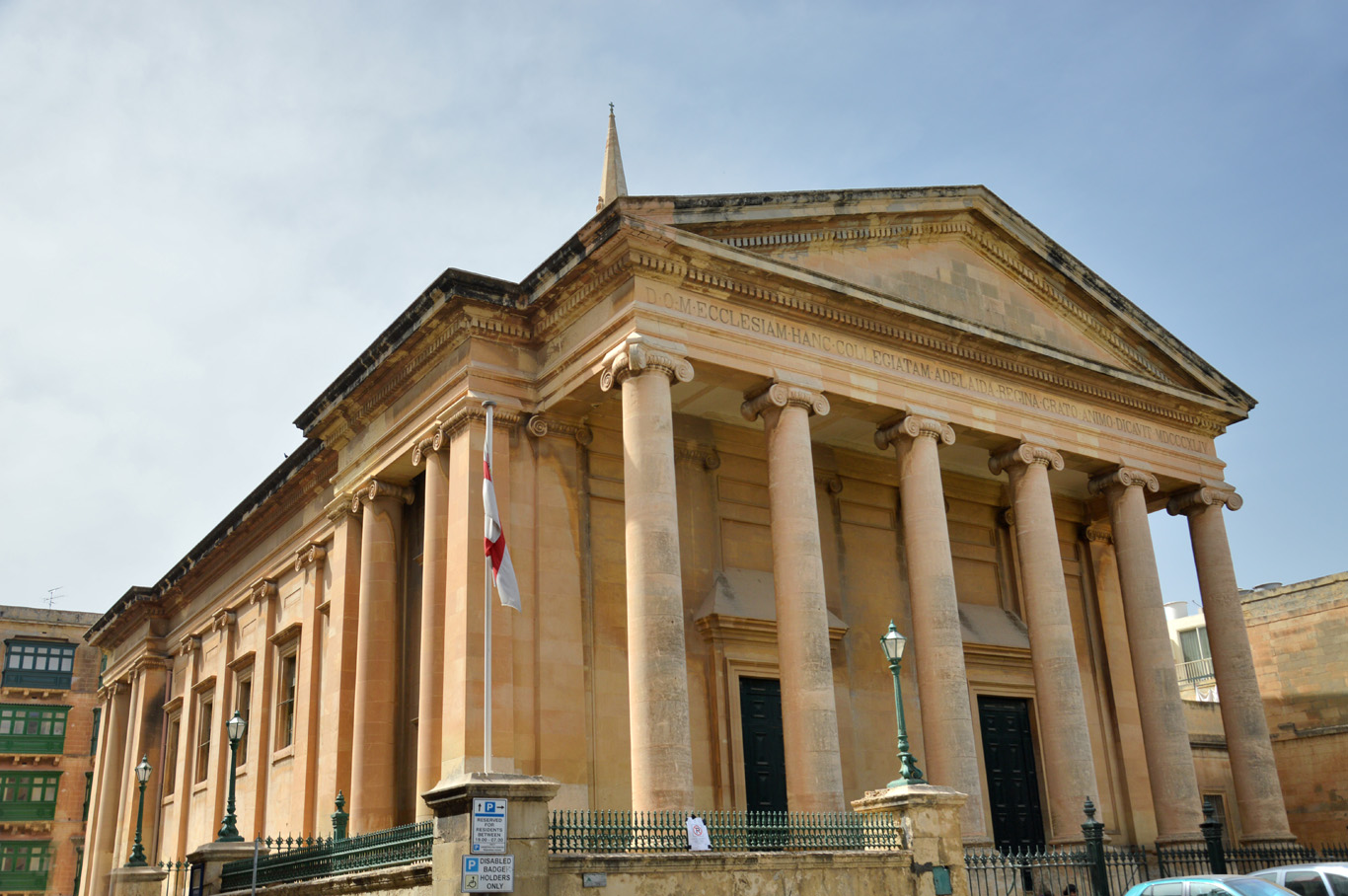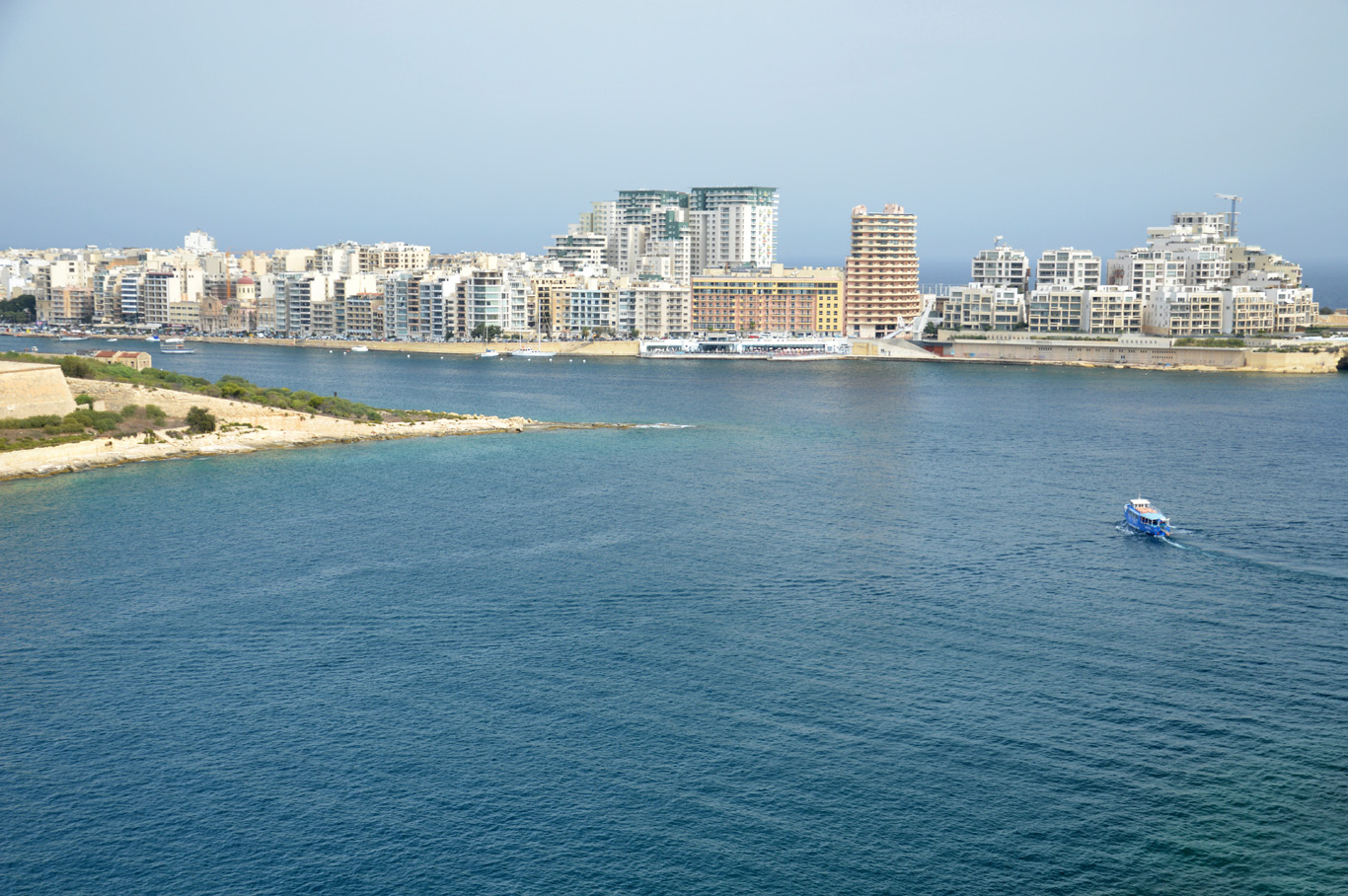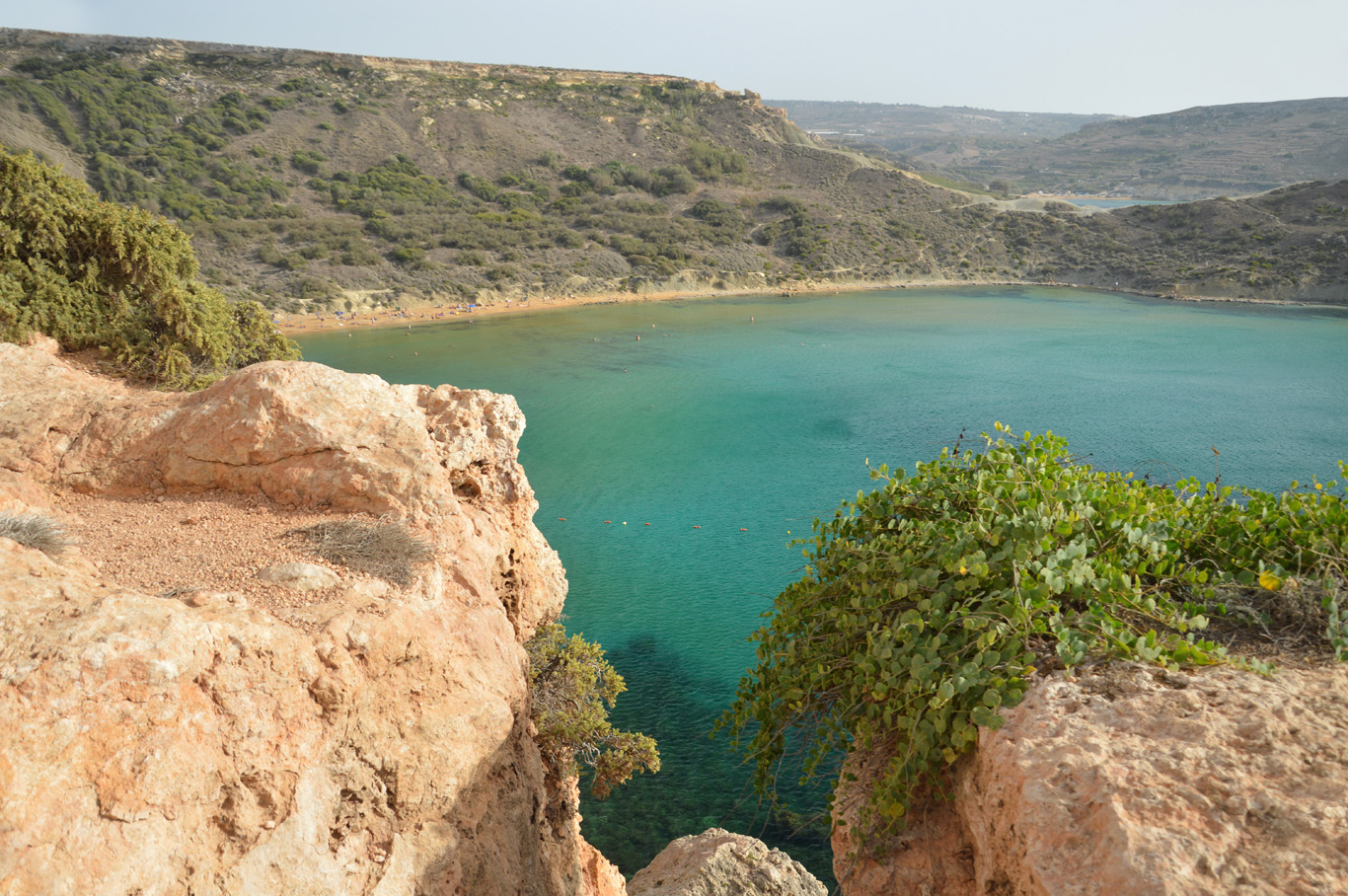Valletta is one of the smallest capitals in one of the tiniest countries in the world. Located on a dry, golden island of Malta, south of Sicily, Valletta will most probably be your gateway to the rest of the country. Although most of the tourists stay at the coast near the popular beaches (which, besides the Blue Lagoon, pretty much disappointed me), it's good to know the historical capital of Malta and see the unique, golden buildings, streets and architecture in Valletta. The city is also the main hub for all public buses - they are cheap and you can use them as an easy way to travel around Malta.
How to get to Valletta
Valletta International Airport receives many flights from all over Europe. As a popular beach destination, many budget airlines fly here. From the airport, you can take a bus which is very cheap or a taxi (around 15 EUR). The ride will take around 30 minutes to Valletta city center. By bus, it can take twice as much. You can find the timetable and info about buses here. You must keep in mind that the bus network, although very well developed, can be unreliable. Sometimes the buses don't come at all. When I was waiting in Valletta to take a bus to the airport, 2 following scheduled buses simply didn't appear at the bus stop.
What to see in Valletta
Don't waste time for the beaches
The coastline in Valletta (like in other, main big cities) is not as attractive as in a quiet, remote part of Malta. Some people don't care about what the beach is like, as long as they have alcohol, sunbeds and the sea. I don't like typical tourist zones, hotels and resorts which look like copies of one another wherever you go. I like to have spectacular nature around, beautiful sea, the feeling of authenticity and space. I hate to be squeezed in the forest of sunbeds and not be able to even spot the actual sea covered by sunbathers in front of me.
Malta is a summer holiday destination, however I got disappointed by the color of water and quality of the beaches around Valletta. It wasn't attractive at all - murky sea and dark sand. Sometimes I don't understand how it all works - Malta is advertised as a mainly beach destination and yet if I were to choose a place for beaches - I'd skip Malta and go to Albania, Slovenia or somewhere in the Balkans right away. I don't understand that people have no desire to discover something really unique, they just blindly follow tourist brochures and "trendy" places which, in fact, aren't that special.
Nevertheless, there are beautiful beaches (although horribly overcrowded) in other parts of the island - like Blue Lagoon and Golden Bay. The coast is also spectacular - especially with the barren cliffs and arches in the nearby isle of Gozo (I'll write about Gozo in the future).
Valletta Old Town
Although, in general, I was disappointed by the beaches, Malta has surprised me with its dry, arid landscapes, unique flora (especially around Golden Bay), dramatic coastline and excellent, extraordinary architecture. However, I must admit that Valletta was not my favorite city in Malta. I enjoyed its unique, golden color and thought it was great, however it was the town of Mdina that totally got me enchanted - I just love the original little towns that are built with local materials - they blend in, in a beautiful way, with the environment. I'll write about Mdina in the future.
Defensive walls at the entrance to the old part
Valletta
Valletta
Valletta
Valletta
One of the balconies
Distinctive balconies
Our Lady of Victories Church
Valletta
Valletta
The view from fortification walls
The view over Great Harbor
Fort Saint Angelo
St. Catherine's Church
Wide streets of Valletta
Wide streets of Valletta
Fortification walls
A building in Valletta
Fort Manoel
Typical street
Street in Valletta
Barrakka Gardens
Valletta
British Telephone Booth
Basilica of St. Dominic
The rear side of St. Dominic's Basilica
The dome of Basilica of Our Lady of Mount Carmel
Saluting battery
Architecture
The old town of Valletta is very small, situated on a little peninsula. It was one of the world's first sites recorded on the UNESCO list. The city, although boasts beautiful, exceptional architecture - literally all of the building are made of the golden rock found all over the island - it's not cozy and doesn't have the atmosphere of an old, little town.
The streets are wide and huge and the buildings very tall. Beautiful, colorful balconies are attached to them creating an original, unique sight. You can also find typical British telephone booths as Malta was a British colony in the past, you'll also notice that everybody speaks English - it's the official language in Malta.
When you walk down the wide streets of Valletta, pay attention to paving slabs - they contain many fossils in them. Indeed, Malta was the bottom of the ocean in prehistoric times. Thus the fossils are found literally everywhere.
Churches
Malta's architecture is similar to the architecture of Europe - you can see some Roman, Gothic and British influences. What is distinctive is the color - all the churches are golden, just like the rock they were made of. The most notable churches are: 16th century Basilica of Our Lady of Mount Carmel with the huge dome overlooking the city - impossible not to notice from afar. Actually, you can properly see it only from a distance, as when you get near, other buildings are too close to one another and will block the view.
Beside the basilica, you'll find another church - Basilica of St. Dominic - Santa Maria de Porto Salvo. It dates back to the 16th century, however was closed for some time after suffering damage from the earthquake. It was reopened in 1815.
Our Lady of Victories Church was the first building completed in Valletta, also in the 16th century. It's located beside the entry to the Barrakka Gardens and the fortification walls.
Right beside, you'll find St. Catherine of Italy Church, like other churches, built in the 16th century.
Another church worth visiting (more inside than outside) is St. John's Cathedral. Unfortunately, when I was in Valletta, it was being renovated and I didn't visit it.
Fortifications
The entire old town is surrounded by the defensive walls (dating from 16th-18th century). Of course, they also have the unique, golden hue. They provide an excellent view of the entire Great Harbor, and at noon every day you can admire saluting battery, where one of the canons is fired.
From Valletta's old town peninsula you can see the modern part of the city as well as other forts and defensive walls located on the other side, for example Fort Saint Angelo and Fort Manoel.
If you wish to deepen you history knowledge, there are multiple tours and presentations available in Valletta.
Modern Valletta - St. Julian's
St. Julian's is the modern area, north of Valletta. The waterfront and its suburbs have many luxurious hotels (although the beaches are not my favorite). St Julian's is also known as the party district - especially popular among students - with many clubs, pubs and restaurants open late 7 days a week throughout the entire season until November.
Modern Valletta
St. Julian's
Waterfront at St. Julian's
St. Julian's
Fossils in the pavement
Outside Valletta
Mdina
Mdina is a little, cozy town, easily reachable from Valletta by public transport. If you visited Dubrovnik, Kotor or Mostar, you'll love Mdina. The golden buildings and streets are very distinctive and give the town a unique feeling. Don't miss St. Paul's Catacombs - underground Roman cemetery. I'll write a post about Mdina soon.
Blue Lagoon
Blue Lagoon is the most beautiful beach in Malta - I suppose, the only one with such crystal clear blue water. It tends to be terribly overcrowded, so much that sunbeds are set on the unpaved roads above the beach. However, not far from there you'll find some peaceful - paradise places, I've described it in detail here in this article about Blue Lagoon.
Golden Bay
Golden Bay is ideal for those who love exploring off the beaten path places. Lunar landscapes, strange flora, barren rocks and dramatic coastline - it's all so different, peaceful, quiet. Nature at its best without resorts and crowds. Have a look at the full article I wrote about the Golden Bay here.
Blue Cave and Prehistoric Settlements
Blue cave is advertised as the most beautiful place in Malta. I would argue. It is nice, but the island of Gozo, and even Blue Lagoon, in my opinion are much more spectacular. You can take a boat tour (depending on weather conditions) and go around the coast to see the famous arch and the caves. However, to get the best view of the arch, you must walk around 20 minutes along the road from the bus stop. Don't miss the prehistoric sites nearby - one of the oldest in the world (dating back to 3500 BC). I will write a full article about Blue Cave and the prehistoric sites soon.
Have a look at "Related Posts" right below to find more articles about Malta.
If you liked this article, you can also download it via the GPSmyCity app - you will be able to gain access to the guide, which will direct you to all the attractions described above, even if you're offline. Download it here.
Related Posts
Copying without permission is not allowed. If you wish to use any of the site's content (photos or text) or work with us, please contact us.
We welcome questions, advice, support or criticism. However, spam comments will be removed.








































